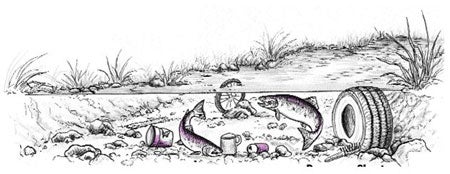Why does migration matter to us?
The health of our planet depends on it. Sometimes called the lifeblood of the Earth, migration is like a vast circulation system that pumps blood toward the Earth's poles in spring and back toward the equator in fall. It cycles nutrients, energy, and genetic information around the globe. Migratory pollinators, for example, carry genetic material as pollen from plant to plant while feeding on nectar. Without pollination, one-third of the food in the human diet would not exist.
What challenges do migrants face?
Although species migrate to survive, they meet endless risks along the way. Some risks are natural, like bears fishing for salmon and wolves hunting caribou. Others are caused by human activities. For instance, the main threat to water birds, such as pintails, black ducks, and piping plovers, is loss of wetlands to farms and housing developments. Migrating birds often crash into high-rise buildings and structures like hydroelectric and telecommunications towers. Countless fish die when dams block their passage. Amphibians and reptiles crossing roads between breeding and hibernating sites are frequently run over by passing cars.
How does habitat fragmentation hurt migrants?
Habitats can't be kept in boxes. They can't remain healthy if the corridors that link them together are cut off by urban sprawl or endless farmland. Conserving an animal's breeding and wintering range means nothing if the lands and waters along its migratory route are paved or plowed over. Migrants are particularly prone to extinction because of the multiple habitats they depend on in different parts of the world.
What is being done to reduce these threats?
International treaties and national laws protect migratory species. The federal government, provinces, and territories share responsibility for protecting other migratory animals and habitats. In addition, millions of hectares of habitat are legally protected as migratory bird sanctuaries, national wildlife areas, and parts of the Western Hemisphere Shorebird Reserve Network.
How can you make way?
- Inform yourself about threats facing migrants. Learn how to track the seasonal journeys of wildlife in real space and in cyberspace. Do any of these animals breed, overwinter, or stop in your region? Working alone or in a small group, get information from a wide range of sources. Start with field guides, magazines, the Internet, and CD-ROMs.
- Once you've learned all you can about a local migrant, create a portfolio to share with others. Include a report on your chosen creature, a migration map, and drawings of the animal in habitats at both ends of its journey and in between.
- Finally, undertake habitat projects like those on this website, providing food, water, shelter, and space that help make way for migrants.

Copyright Notice
© Canadian Wildlife Federation
All rights reserved. Web site content may be electronically copied or printed for classroom, personal and non-commercial use. All other users must receive written permission.
